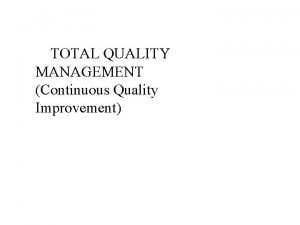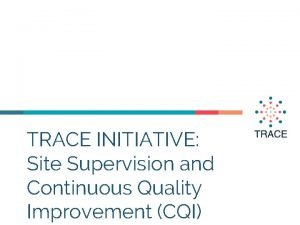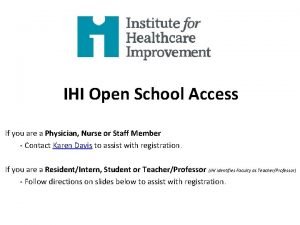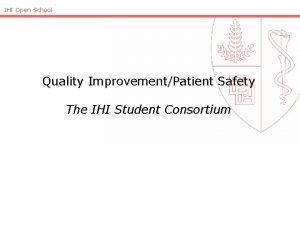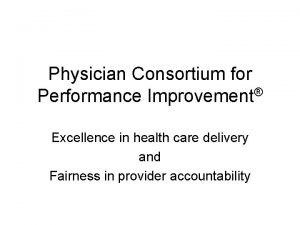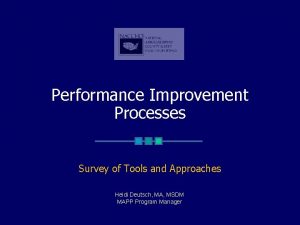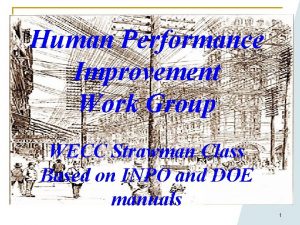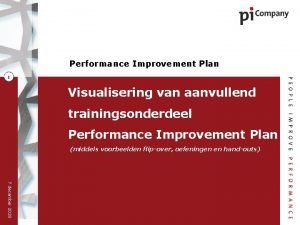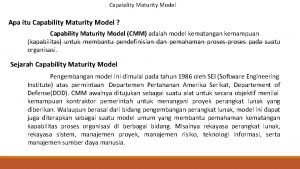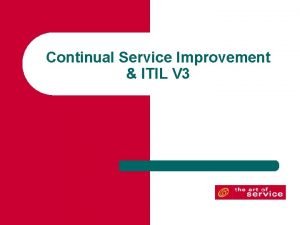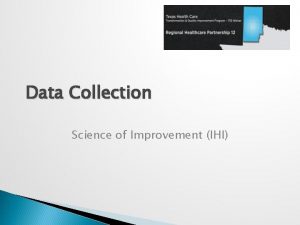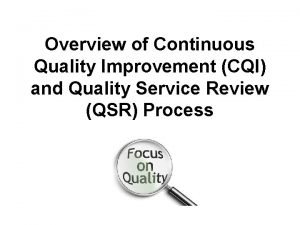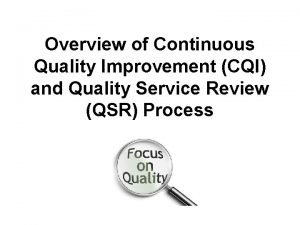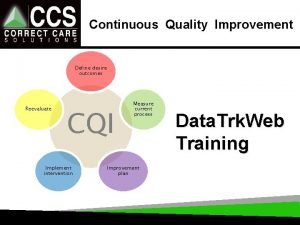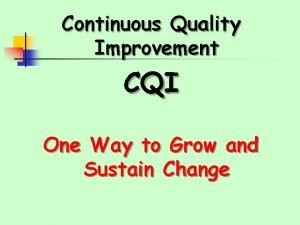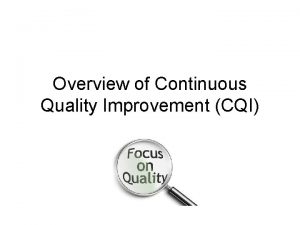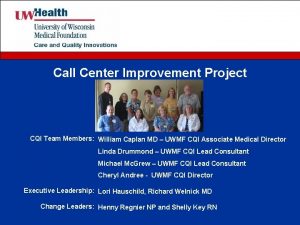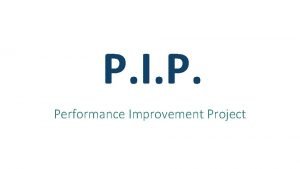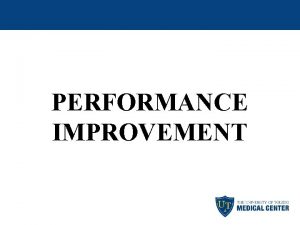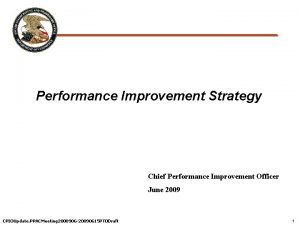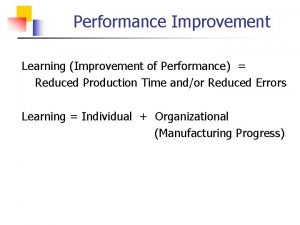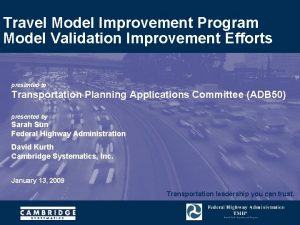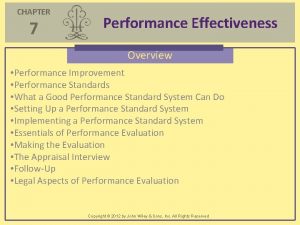Performance Improvement IHI CQI Model Change Concepts Change




























- Slides: 28













Performance Improvement: IHI CQI Model

Change Concepts


Change Concepts for Advanced Clinic Access SHAPE DEMAND 1. Work down with backlog • Gain immediate capacity • Temporarily add appointment slots 2. Reduce demand (specialty care) • Build service agreement between primary care and specialty care • Extend interval for return appointment • Reduce demand for physician visits by optimizing team roles • Discharge patients to primary care from specialty care • Create alternatives to traditional face-to-face interactions MATCH SUPPLY AND DEMAND 3. Understand supply and demand • Know your supply 5. Plan for contingencies • Consider doing today’s work today • Manage demand variation • Establish input equity for specialty clinics proactively 4. Reduce appointment types • Develop flexible, multi-skilled staff • Use a small number of appointment types • Anticipate unusual but expect • Standardize appointment lengths events

Change Concepts for Advanced Clinic Access REDESIGN THE SYSTEM TO INCREASE SUPPLY 6. Manage the constraint • Identify the constraint • Drive unnecessary work away from the constraint 7. Optimize the care team • Ensure all roles in practice are maximized to meet patient needs • Use standardize protocols to optimize use of other providers • Separate responsibilities for phone triage, patient flow, and paper flow 8. Synchronize patient, provider, and information • Start the first AM and PM appointment on time • Do patient registration by phone when confirming the patient appointment • Check the chart to make sure it is complete, accurate, and present at appointment • Use health prompts to anticipate full potential of today’s need • Make sure that rooming criteria include having the patient ready 9. Predict and anticipate patient need at time of appointment • Use regular ‘huddles’ to anticipate and plan for contingencies • Communicate among care delivery team throughout the day 10. Optimize rooms and equipment • Use open rooming to maximize flexibility • Standardize supplies in exam rooms and keep stocked at all times

Human Centered Design http: //dschool. stanford. edu/ Empathize Ideate Define Prototype Test Empathize • รบร อารมณรวมกบผใชผานการสงเกต มปฏสมพนธ แ • คนหา insight เพอนำมาส innovative solution • มองสงตางๆ ดวยสายตาทสดใหม – empathy & human centered


DEFINE: Point-of-View Madlib WHY: เปนการระบ actionable problem statement HOW: • ใช madlib ตอไปน • [USER] ตองการทจะ [USER’S NEED] เนองจาก [SURPRISING INSIGHT] POV: Harried mother of three, rushing through the airport only to wait hours at the gate, needs to entertain her playful children because “annoying little brats” only irritate already frustrated fellow passengers.

IDEATE “How Might We” Questions WHY: HMW เปนคำถามสนๆ เพอเรมตนระดม สมอง เปน format guidelines for solution ท abstract HOW: เพอให แต actionable • เรมจาก POV, insight, หรอ problem statement สราง small actionable questions ทยงคงไวซง unique & specific perspective โดยเรมประโยคดวย HMW Amp up“เราจะทำอะไรไดบางเพอทจะ the good: HMW use the kids’ energy to entertain fellow passenger? ”. . . Remove the bad: HMW separate the kids from fellow passengers? Explore the opposite: HMW make the wait the most exciting part of the trip? Question an assumption: HMW entirely remove the wait time at the airport? Go after adjectives: HMW we make the rush refreshing instead of harrying? ID unexpected resources: HMW leverage free time of fellow passengers to share the load? Create an analogy from need or context: HMW make the airport like a spa? Like a playground? Play against the challenge: HMW make the airport a place that kids want to go? Change a status quo: HMW make playful, loud kids less annoying? Break POV into pieces: HMW entertain kids? HMW slow a mom down? HMW mollify delayed passengers?

Prototype to Test WHY: เพอใหผใชมประสบการณกบ solution HOW: และ react • Create low-resolution objects & scenario to probe question • นำ ความคดออกจากหวมาสโลกภายนอก อะไรกไดทอยในรปแบบกายภาพ เชน การตดกระดาษ post-it ทฝาผนง , กจกรรมบทบาทสมมต , พนท , Startสงของ building. , Even if you aren’t sure what you’re doing, the act of picking up interface, storyboard some materials (paper, tape, and found objects are a good way to start!) will be enough to get you going. Don’t spend too long on one prototype. Move on before you find yourself getting too emotionally attached to any one prototype. Build with the user in mind. What do you hope to test with the user? What sorts of behavior do you expect? Answering these questions will help focus your prototyping and help you receive meaningful feedback in the testing phase. ID a variable. Identify what’s being tested with each prototype. A prototype should answer a particular question when tested.

Testing with Users WHY: เพอรบ feedback สำหรบนำมา refine solution และ gain more empathy HOW: • Multiple aspects to be aware • Your prototype, contest & scenario • How you interact with the user • How you observe & capture the feedback • Roles: host, players, observers





 Cqi in front office
Cqi in front office Cqi tqm
Cqi tqm Cqi action plan template
Cqi action plan template Ihi alliance halal
Ihi alliance halal Ihi care bundles
Ihi care bundles Post-lesson assessment: l 101 lesson 1
Post-lesson assessment: l 101 lesson 1 Ihi alliance
Ihi alliance Ihi open school
Ihi open school Ihi basic certificate
Ihi basic certificate Ihi open school
Ihi open school Ihi breakthrough series
Ihi breakthrough series Tips para maka ihi
Tips para maka ihi Ihi joy in work framework
Ihi joy in work framework Ihi zittau
Ihi zittau Performance improvement plan examples
Performance improvement plan examples Physician consortium for performance improvement
Physician consortium for performance improvement Performance improvement survey
Performance improvement survey Shrm pip template
Shrm pip template Human performance improvement principles
Human performance improvement principles Housekeeping performance evaluation
Housekeeping performance evaluation Star human performance tool
Star human performance tool Loopbaandadvies
Loopbaandadvies Call center performance improvement plan template
Call center performance improvement plan template Rapid improvement model
Rapid improvement model Florida continuous improvement model
Florida continuous improvement model Apa itu cmmi
Apa itu cmmi Model for improvement
Model for improvement Continual service improvement model
Continual service improvement model Rapid cycle improvement
Rapid cycle improvement

